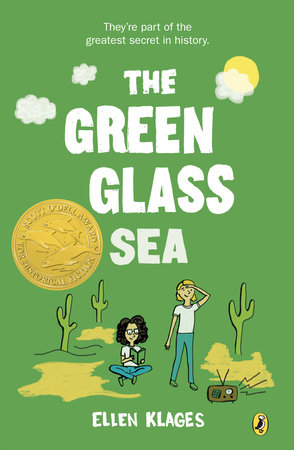

















"Dewey, ten, embarks alone on a mysterious train trip from her grandmother's home in St. Louis to New Mexico, where she will rejoin her often-absent mathematician father. It's 1943, and Dewey's dad is working at Los Alamos -- "the Hill" -- with hundreds of other scientists and their families. Klages evokes both the big-sky landscape of the Southwest and a community where "everything is secret" with inviting ease and the right details, focusing particularly on the society of the children who live there. Dewey seems comfortable with her own oddness (she's small for her age, slightly lame, and loves inventing mechanical gizmos) and serves as something of an example to another girl, Suze, who has been trying desperately to fit in. Their burgeoning friendship sees them through bouts of taunting, their parents' ceaseless attention to "the gadget," personal tragedy, and of course the test detonation early on July 16, 1945, which the two girls watch from a mesa two hundred miles away: "Dewey could see the colors and patterns of blankets and shirts that had been indistinct grays a second before, as if it were instantly morning, as if the sun had risen in the south, just this once." Cameo appearances are made by such famous names as Richard Feynman (he helps Dewey build a radio) and Robert Oppenheimer, but the story, an intense but accessible page-turner, firmly belongs to the girls and their families; history and story are drawn together with confidence." -The Horn Book Magazine, starred review